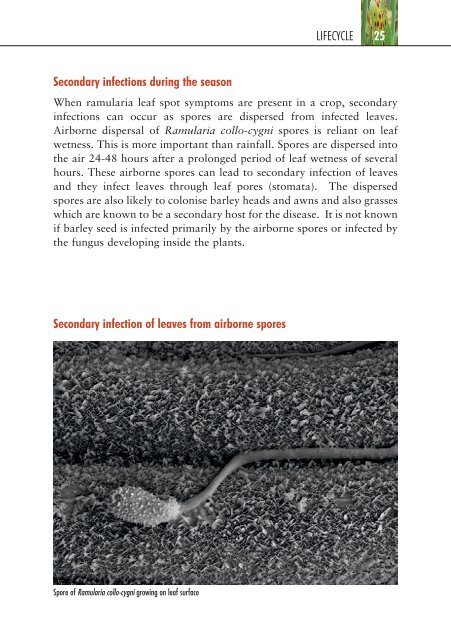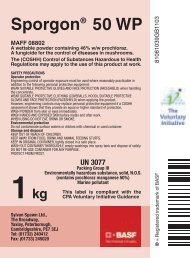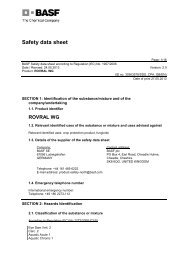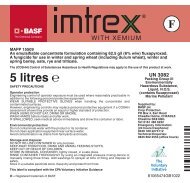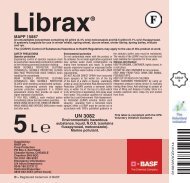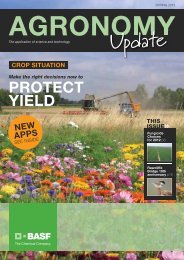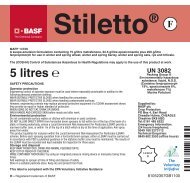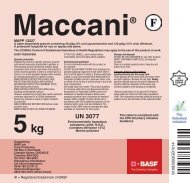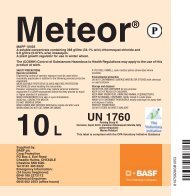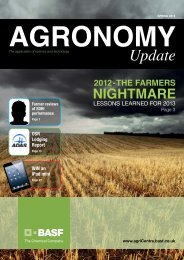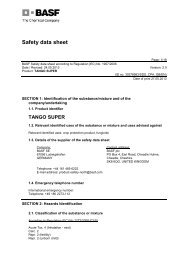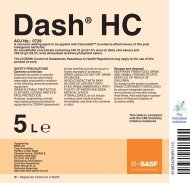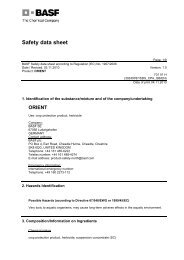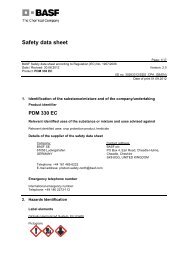a guide to the recognition and understanding of ramularia and other ...
a guide to the recognition and understanding of ramularia and other ...
a guide to the recognition and understanding of ramularia and other ...
Create successful ePaper yourself
Turn your PDF publications into a flip-book with our unique Google optimized e-Paper software.
Secondary infections during <strong>the</strong> season<br />
LIFECYCLE 25<br />
When <strong>ramularia</strong> leaf spot symp<strong>to</strong>ms are present in a crop, secondary<br />
infections can occur as spores are dispersed from infected leaves.<br />
Airborne dispersal <strong>of</strong> Ramularia collo-cygni spores is reliant on leaf<br />
wetness. This is more important than rainfall. Spores are dispersed in<strong>to</strong><br />
<strong>the</strong> air 24-48 hours after a prolonged period <strong>of</strong> leaf wetness <strong>of</strong> several<br />
hours. These airborne spores can lead <strong>to</strong> secondary infection <strong>of</strong> leaves<br />
<strong>and</strong> <strong>the</strong>y infect leaves through leaf pores (s<strong>to</strong>mata). The dispersed<br />
spores are also likely <strong>to</strong> colonise barley heads <strong>and</strong> awns <strong>and</strong> also grasses<br />
which are known <strong>to</strong> be a secondary host for <strong>the</strong> disease. It is not known<br />
if barley seed is infected primarily by <strong>the</strong> airborne spores or infected by<br />
<strong>the</strong> fungus developing inside <strong>the</strong> plants.<br />
Secondary infection <strong>of</strong> leaves from airborne spores<br />
Spore <strong>of</strong> Ramularia collo-cygni growing on leaf surface


